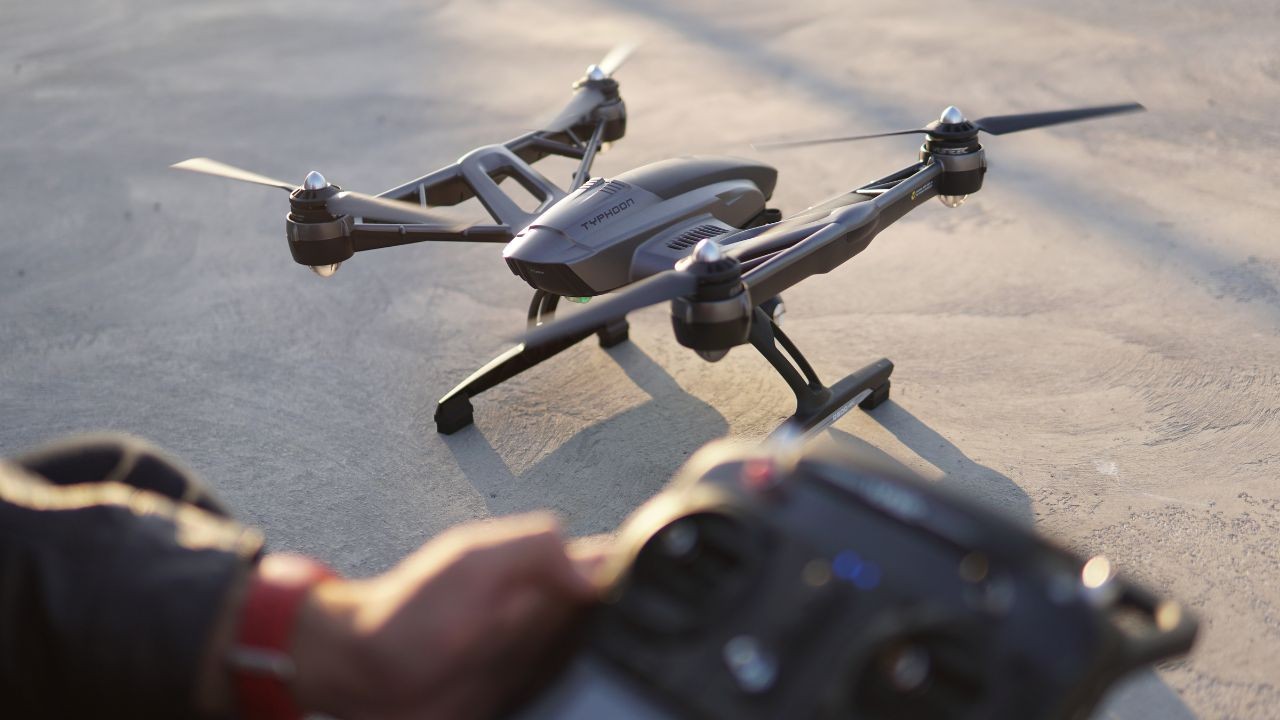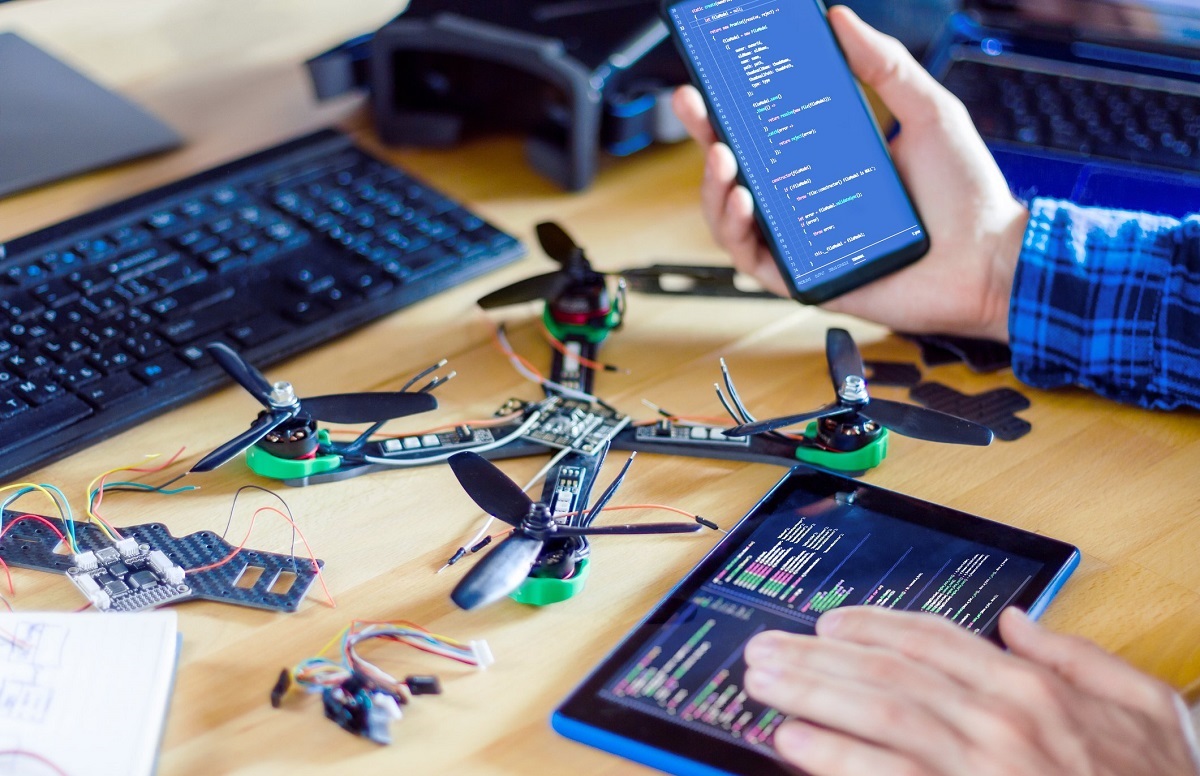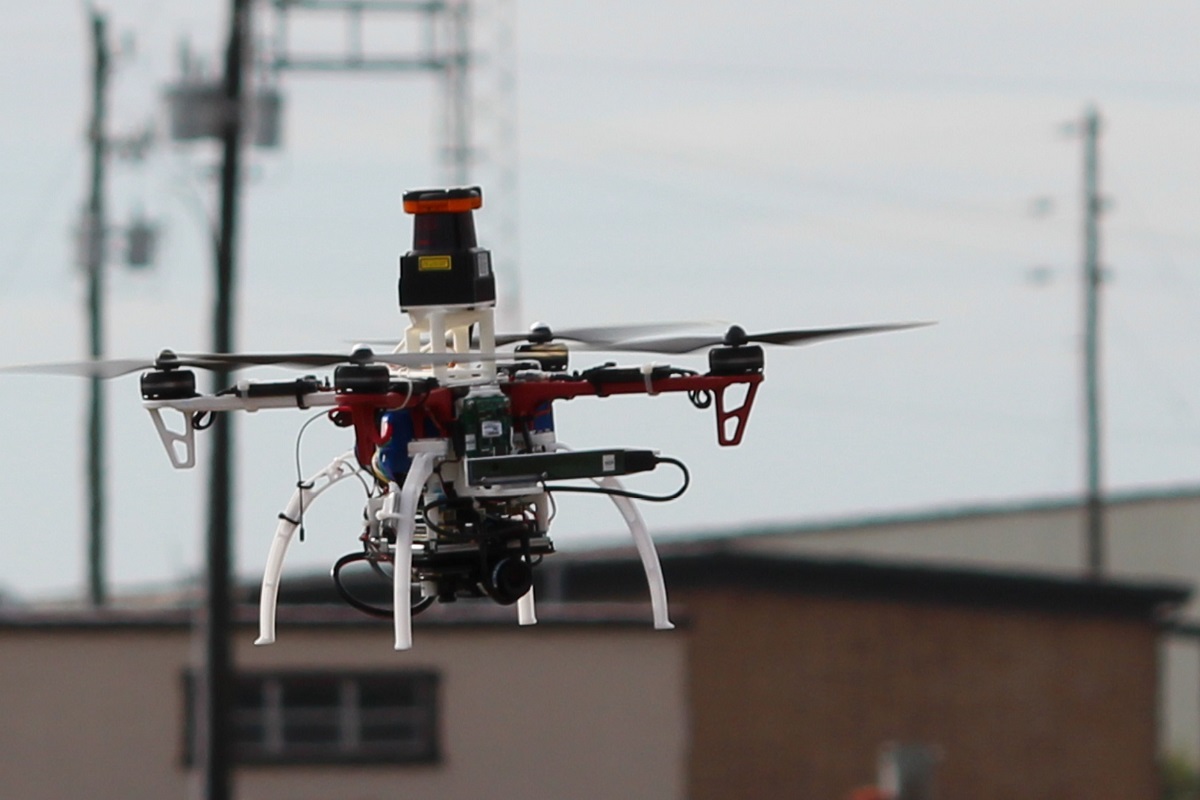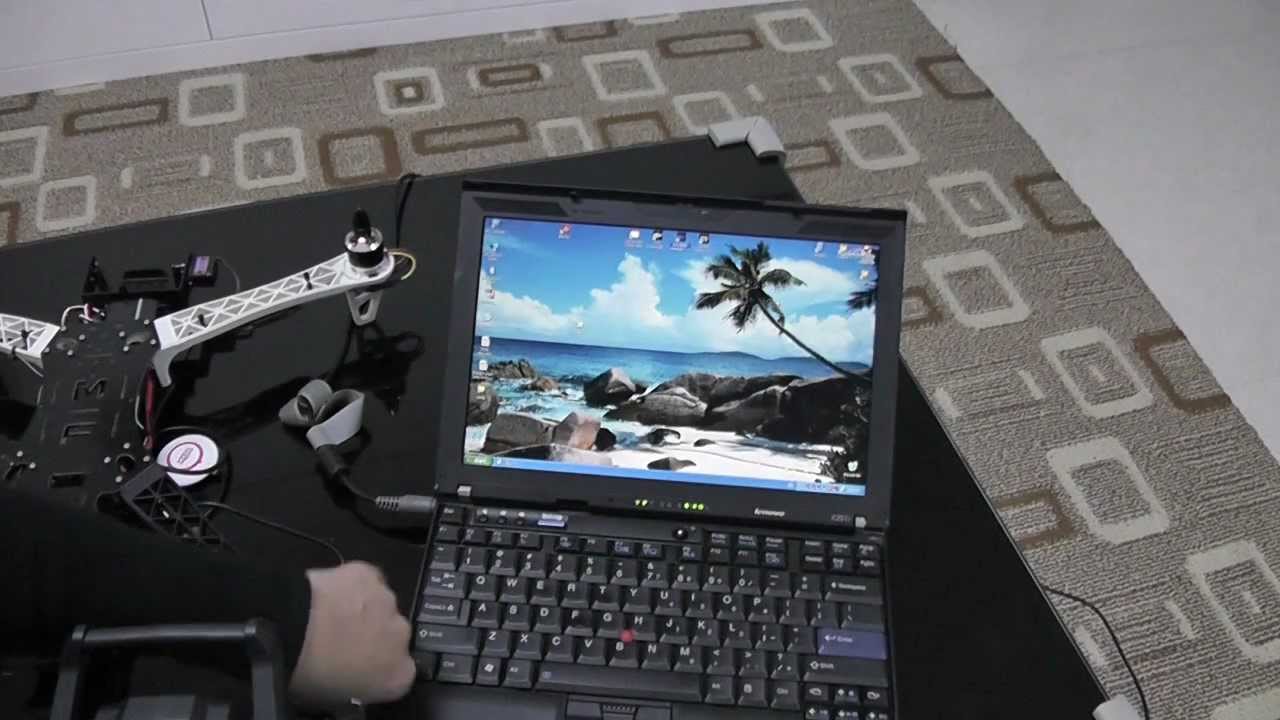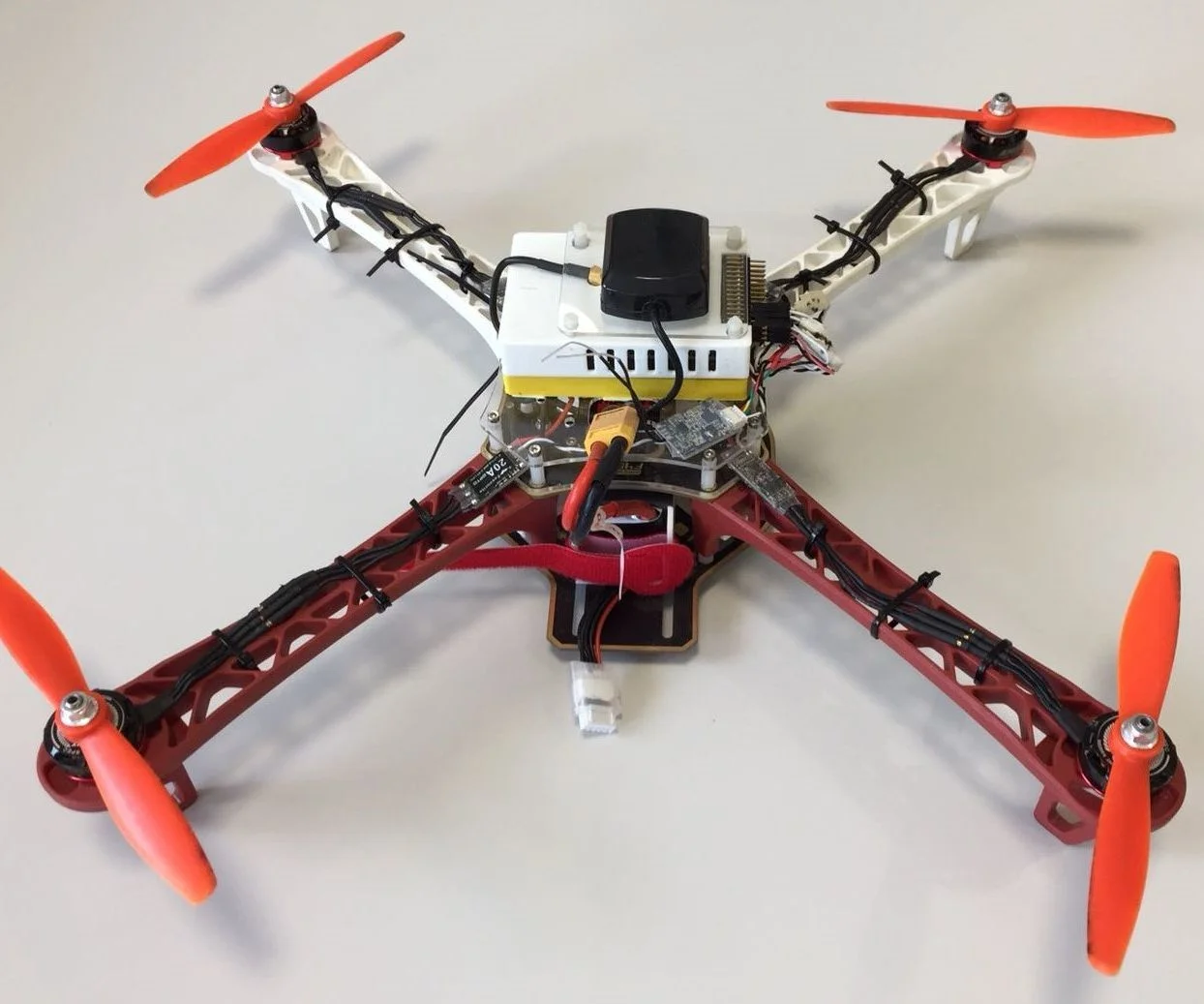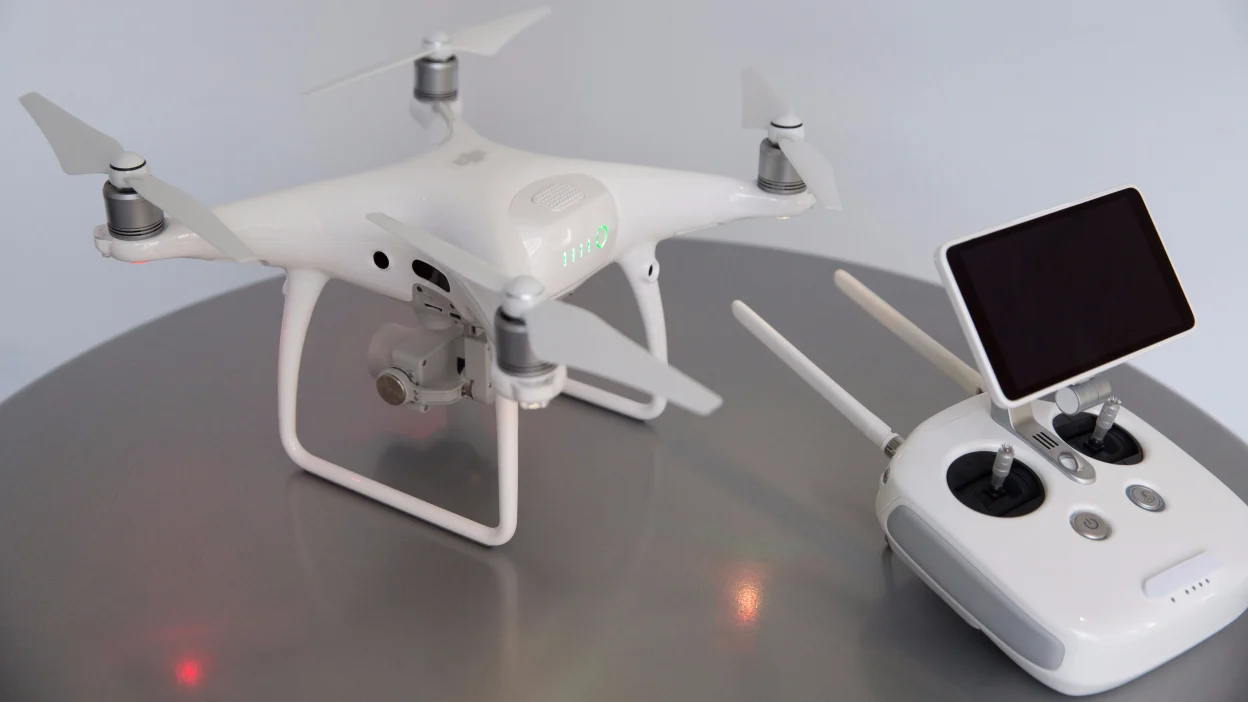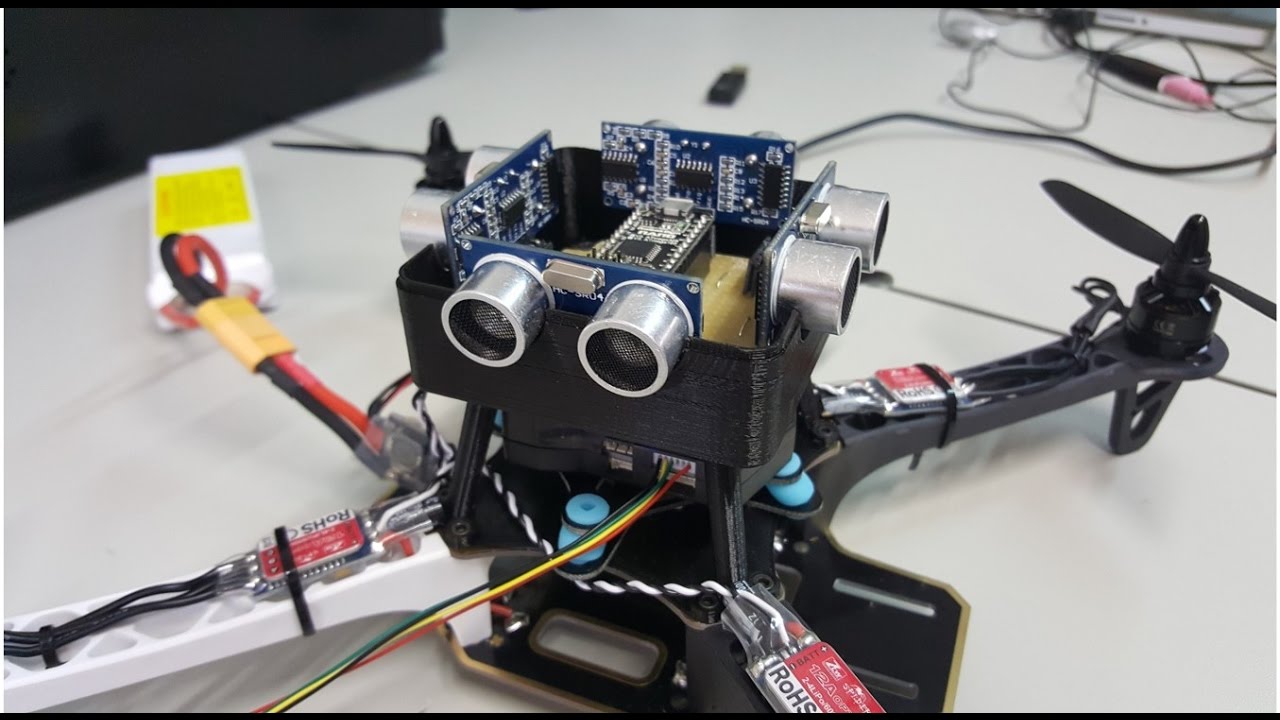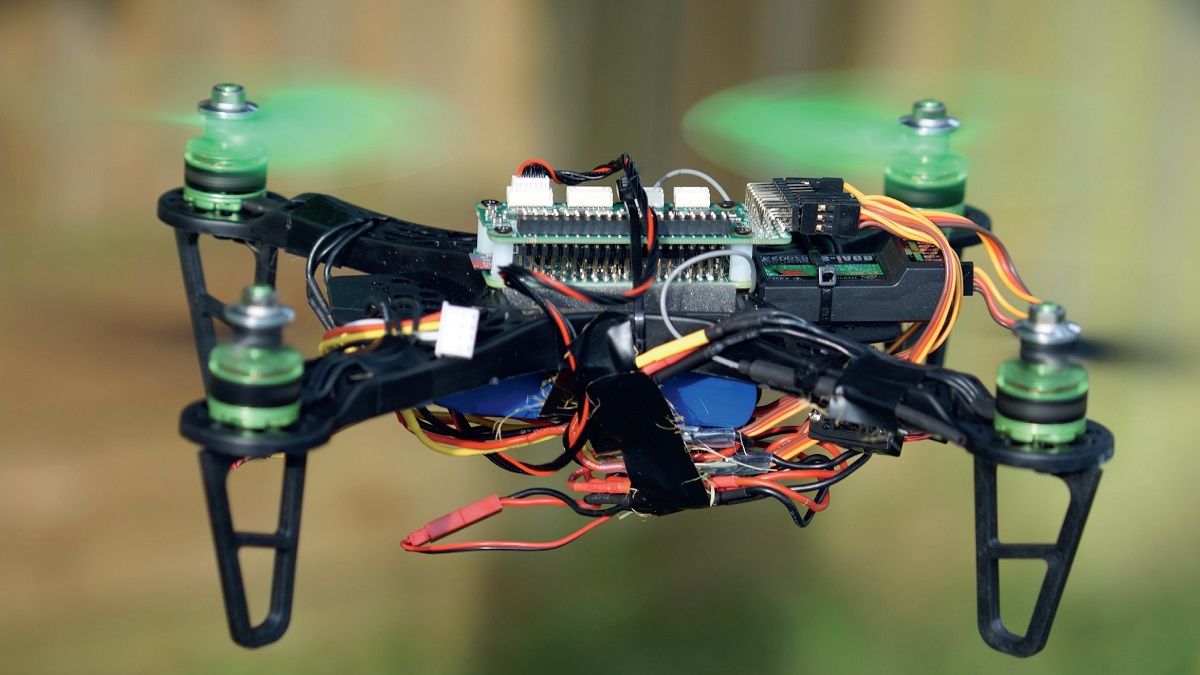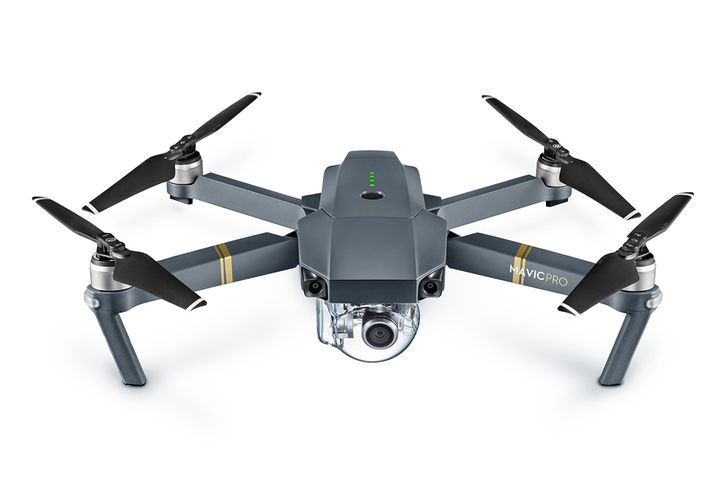Why Start a Drone Program?
Unmanned aerial vehicles, commonly known as drones, have rapidly gained popularity in various industries for their versatility and potential applications. Whether you’re a business owner, a government agency, or an individual with specific needs, starting a drone program can bring numerous benefits. Here are some key reasons to consider:
- Cost-effectiveness: Drones offer a cost-effective solution for tasks that would otherwise require expensive equipment or manpower. They can significantly reduce operational costs and increase efficiency in various industries, such as agriculture, construction, and surveying.
- Enhanced Safety: By utilizing drones, you can eliminate the need for humans to perform dangerous tasks in hazardous environments. Drones can easily access remote or hard-to-reach areas, reducing the risk of accidents and injuries.
- Data Collection and Analysis: Drones equipped with advanced sensors and cameras can gather valuable data, including aerial imagery, thermal imaging, and LiDAR scans. This data can be used for analysis and decision-making, providing valuable insights for improved planning and resource allocation.
- Improved Efficiency: Drones can carry out tasks with unrivaled speed and accuracy. They can complete tasks such as aerial inspections, mapping, and surveillance in a fraction of the time it would take using traditional methods.
- Increased Productivity: With the ability to automate repetitive tasks and operate 24/7, drone technology can greatly enhance productivity. This allows for faster outputs, reduced downtime, and increased operational efficiency.
- Better Environmental Impact: Drones are eco-friendly alternatives to traditional methods that rely on fossil fuels and produce harmful emissions. By reducing the need for ground vehicles or manned aircraft, drones contribute to a greener and more sustainable future.
These compelling reasons make starting a drone program a smart investment for various industries and organizations. However, before diving headfirst into launching a drone program, it’s crucial to consider the legalities and regulations surrounding drone operations.
Understanding the Legalities and Regulations
Before embarking on a drone program, it’s imperative to have a solid understanding of the legalities and regulations surrounding drone operations. Failure to comply with these laws can result in hefty fines or legal consequences. Here are the key aspects to consider:
- Registration and Licensing: In many countries, drones need to be registered with the aviation authority. Pilots may also require a license or certification, depending on the purpose and weight of the drone. Familiarize yourself with the specific requirements in your region.
- Airspace Restrictions: Drone pilots must be aware of airspace restrictions, including no-fly zones such as airports, military bases, and national parks. It’s essential to check the appropriate resources, such as online maps and airspace databases, to identify restricted areas and fly safely within legal boundaries.
- Flight Regulations: Drone operations are subject to specific flight rules, such as maximum altitude limits, line-of-sight requirements, and restrictions on flying over people or vehicles. Understanding and adhering to these regulations ensures safe and legal operations.
- Privacy and Data Protection: Drones equipped with cameras raise concerns about privacy and data protection. Ensure compliance with local laws and regulations regarding the collection, storage, and use of personal data and obtain consent when required.
- Insurance Requirements: Depending on the nature of your drone program, it may be necessary to obtain appropriate insurance coverage. General liability insurance, hull insurance for the drone itself, and additional coverage for specialized operations should be considered to mitigate potential risks.
- Ongoing Regulatory Updates: Drone regulations are evolving rapidly. Stay informed about any changes or updates to ensure ongoing compliance with the law. Joining industry associations or forums can provide valuable insight into emerging trends and regulatory developments.
By familiarizing yourself with the legalities and regulations, you can ensure the safe and compliant operation of your drone program. Next, let’s explore the crucial factors to consider when choosing the right drones for your specific needs.
Choosing the Right Drones
Selecting the right drones for your program is vital to maximize performance and achieve your desired outcomes. With a wide variety of drones available in the market, here are some key factors to consider when making your decision:
- Purpose and Payload: Determine the primary purpose of your drone program. Are you planning to use it for aerial photography, mapping, inspections, or delivery services? Consider the payload capacity, camera quality, and additional features required to fulfill your specific needs.
- Flight Performance: Evaluate the flight capabilities of the drones you are considering. Factors such as maximum flight time, range, maneuverability, and stability in different weather conditions are crucial for successful and efficient operations.
- Control and Autonomy: Assess the control system and autonomy features of the drones. User-friendly controls and reliable autonomous flight modes can facilitate ease of use and enable complex missions with precision and accuracy.
- Safety Features: Prioritize drones with safety features like obstacle avoidance systems, automatic return-to-home functions, and redundancy systems. These features not only protect your investment but also mitigate potential risks during flights.
- Battery Life and Charging: Consider the battery life of the drones and the availability of spare batteries. Having longer flight endurance and efficient charging options can minimize downtime and maximize productivity.
- Budget and Cost: Set a realistic budget for your drone program and consider the upfront cost of the drones, ongoing maintenance expenses, and potential upgrades or accessories. Avoid compromising quality for cost, as investing in reliable and durable drones can save you money in the long run.
- Customer Support and Warranty: Research the reputation and reliability of the drone manufacturer or supplier. Look for companies that provide excellent customer support, comprehensive warranties, and access to spare parts to ensure prompt assistance and maintenance.
By carefully evaluating these factors and aligning them with your program’s goals and requirements, you can choose the right drones that will serve as valuable tools for your operations. Next, we’ll delve into the importance of training and certification for drone pilots.
Training and Certification for Pilots
Ensuring that drone pilots receive proper training and certification is essential for safe and proficient operation of your drone program. The following points emphasize the importance of training and provide guidance on certification:
- Regulatory Compliance: Many jurisdictions require drone pilots to undergo specific training and obtain certification to operate drones legally. Familiarize yourself with the regulations in your region and ensure pilots receive the necessary training to comply with these requirements.
- Flight Skills and Safety: Training programs focus on developing essential flight skills, including takeoff and landing techniques, maneuvering, and emergency procedures. These skills are crucial for safe and effective drone operations, minimizing the risk of accidents or damage to equipment.
- Knowledge of Airspace and Regulations: Pilots must understand airspace regulations, flight restrictions, and operating procedures to ensure compliance and avoid airspace violations. Training covers topics such as reading aviation charts, communicating with air traffic control, and interpreting weather conditions for safe flight planning.
- Emergency Preparedness: Training prepares pilots to react appropriately in emergency situations, such as equipment malfunctions or unexpected weather changes. Pilots learn how to troubleshoot issues and make quick decisions to ensure the safety of the drone and people in the vicinity.
- Risk Management: Training programs educate pilots on risk assessment and management strategies. This includes identifying potential hazards, implementing safety protocols, and understanding legal and ethical considerations of drone operations.
- Continued Education: Drone technology and regulations are constantly evolving. Pilots should engage in continuous education to stay up-to-date with the latest industry trends, regulations, and operational best practices. This ensures pilots maintain their skills and knowledge for safe and efficient operations.
Certification can be obtained through recognized organizations or aviation authorities and may involve written examinations and practical assessments. It’s essential to choose reputable training providers or institutions that offer comprehensive and up-to-date courses to deliver the necessary knowledge and skills.
By investing in proper training and certification, you ensure that your drone pilots are competent, knowledgeable, and capable of operating drones in a responsible and safe manner. Next, we will discuss the importance of developing safety protocols and obtaining insurance coverage for your drone program.
Developing Safety Protocols and Insurance
Developing safety protocols and obtaining insurance coverage are crucial steps in mitigating risks and ensuring the successful operation of your drone program. The following points highlight the importance of safety protocols and provide insights on insurance considerations:
- Risk Assessment: Conduct a comprehensive risk assessment to identify potential hazards and develop protocols to mitigate them. Consider factors such as flying conditions, environmental obstacles, and proximity to people or property.
- Standard Operating Procedures (SOPs): Define clear and detailed SOPs to guide pilots in their operations. These protocols should cover pre-flight checks, emergency procedures, flight restrictions, and data handling practices.
- Pilot Training and Compliance: Ensure that all drone pilots are trained on safety protocols and comply with established procedures. Regular training sessions and ongoing monitoring can help maintain a culture of safety within your drone program.
- Maintenance and Inspections: Establish a regular maintenance schedule for your drones to ensure they are in optimal operating condition. Conduct inspections before and after flights to identify any potential issues that could compromise safety.
- Insurance Coverage: Obtain appropriate insurance coverage for your drone program. General liability insurance can protect against third-party claims for property damage or bodily injury. It is also advisable to consider hull insurance to cover damage to the drones themselves as well as coverage for specialized operations or additional risks.
- Understanding Policy Limitations: Thoroughly review insurance policies to understand the coverage limitations, exclusions, deductibles, and any specific requirements or endorsements. Consult with an insurance professional experienced in drone insurance to ensure you have the appropriate coverage for your program.
- Contract Reviews: If working with clients or subcontractors, review contractual requirements regarding insurance coverage. Ensure that your insurance policy meets or exceeds the stipulated requirements to protect your business and maintain compliance.
- Regular Policy Updates: Stay informed of changes in insurance regulations and industry practices to ensure your policy remains up-to-date and provides adequate coverage. Periodically reassess your insurance needs as your drone program evolves.
By developing and implementing safety protocols and obtaining comprehensive insurance coverage, you can mitigate potential risks and protect your business, making your drone program more secure and sustainable. Next, we will explore the importance of maintenance and repairs to ensure the longevity and optimal performance of your drones.
Implementing Maintenance and Repairs
Implementing a robust maintenance and repair program is essential for ensuring the longevity and optimal performance of your drones. Diligent maintenance and timely repairs not only promote safety but also enhance the reliability and efficiency of your drone program. Here are key considerations:
- Regular Inspection: Conduct regular inspections of your drones to identify any signs of wear and tear, damage, or malfunction. Inspections should cover crucial components such as motors, propellers, batteries, and sensors.
- Preventive Maintenance: Establish a preventive maintenance schedule to proactively address potential issues and minimize downtime. This includes cleaning, calibrating, and updating firmware or software of your drones.
- Battery Management: Implement proper battery management practices, such as monitoring charge cycles and storage conditions, to optimize battery life and performance. Regularly check for any battery swelling or degradation.
- Component Replacement: Have a systematic process in place for replacing damaged or faulty components promptly. Maintain a supply of spare parts to avoid potential disruptions in operations.
- Repair Partnership: Establish a relationship with a reliable repair service provider or have a qualified in-house technician who can handle repairs and troubleshoot technical issues. This ensures quick turnaround times and minimizes the downtime of your drones.
- Data Backup: Regularly back up all flight data and important settings from your drones to prevent the loss of valuable information. Consider cloud storage or off-site backups for added security.
- Software Updates: Keep your drones’ software and firmware up to date to access the latest features, bug fixes, and security enhancements provided by the manufacturers. Regularly check for updates and implement them as recommended.
- Documentation and Logs: Maintain detailed documentation of maintenance activities, repairs, and any modifications made to your drones. This information can provide valuable insights, aid troubleshooting, and support warranty claims.
By implementing a comprehensive maintenance and repair program, you can ensure that your drones operate at their optimal level, reduce the risk of malfunctions or accidents, and extend their lifespan. Next, let’s delve into the importance of choosing the right software and data management tools for your drone program.
Choosing the Right Software and Data Management Tools
Choosing the right software and data management tools is essential for efficient and effective operation of your drone program. These tools can streamline workflows, enhance data analysis capabilities, and facilitate collaboration. Consider the following factors when selecting software and data management tools:
- Mission Planning and Flight Control: Look for software that allows intuitive mission planning and flight control capabilities. Features like waypoint navigation, automated flights, and real-time monitoring enhance the accuracy and efficiency of your drone missions.
- Data Capture and Processing: Consider software that supports the capture of various data types such as aerial imagery, thermal imaging, or LiDAR scans. Ensure that it facilitates seamless data processing, stitching, and georeferencing to generate accurate and useful outputs.
- Data Analysis and Visualization: Opt for software that offers robust data analysis and visualization tools. These features allow for in-depth analysis, measurement, and interpretation of collected data, providing valuable insights for informed decision-making.
- Mapping and GIS Integration: If mapping or geographic information system (GIS) integration is essential for your drone program, choose software that seamlessly integrates with mapping and GIS platforms. This facilitates data exchange and allows for easy integration of drone-generated data into existing datasets.
- Collaboration and Data Sharing: Consider software that enables collaboration between team members, clients, or stakeholders. Features like cloud storage, project sharing, and real-time collaboration enhance teamwork and simplify data sharing processes.
- Security and Data Protection: Ensure that the software you choose prioritizes security measures and data protection. Look for features like encryption, user access controls, and data backup options to safeguard sensitive information.
- Compatibility and Scalability: Consider software that is compatible with different operating systems and can adapt to your program’s growth. Scalable solutions can handle increasing data volumes, accommodate additional users, and integrate with new technologies as your drone program expands.
- User-Friendly Interface: Choose software with an intuitive and user-friendly interface to minimize the learning curve for your team. This promotes efficiency and productivity, allowing users to focus on tasks rather than navigating complicated software.
By carefully evaluating and selecting the right software and data management tools, you can streamline your drone program’s operations, optimize data analysis capabilities, and enhance collaboration among team members. Next, let’s explore the importance of planning and executing missions to achieve successful outcomes for your drone program.
Planning and Executing Missions
Effective planning and execution of missions are crucial for the success of your drone program. Properly planned missions ensure efficient use of resources, accurate data collection, and safe operations. Consider the following factors when planning and executing drone missions:
- Define Objectives: Clearly define the objectives of each mission. Whether it’s aerial photography, mapping, or inspection, having well-defined goals helps in selecting the appropriate equipment, flight parameters, and data collection methods.
- Site Assessment: Conduct a thorough site assessment before each mission. Analyze the terrain, identify potential obstacles or hazards, and consider environmental factors such as weather conditions and airspace restrictions.
- Flight Planning: Plan the flight path and specify waypoints or areas of interest for data collection. Utilize mission planning software or apps to ensure accurate and efficient execution of flights, taking into account factors like altitude, speed, and camera settings.
- Weather Monitoring: Monitor weather conditions before and during the mission. Adverse weather, including strong winds, rain, or low visibility, can affect safety and data quality. Reschedule or adjust flight plans accordingly.
- Pilot Briefings: Conduct thorough briefings with drone pilots and crew members involved in the mission. Communicate the mission objectives, flight plans, emergency procedures, and any specific challenges or areas of focus they should be aware of.
- Checklists and Pre-flight Inspections: Develop pre-flight checklists to ensure all necessary equipment, batteries, and data storage devices are in order. Perform comprehensive pre-flight inspections to confirm the functionality and airworthiness of the drones.
- Real-time Monitoring: Use real-time monitoring tools to track the drone’s status, battery life, and GPS location during the mission. Ensure constant communication with the pilot to address any issues or changes in the flight plan.
- Data Collection: Collect data as planned during the flight and ensure that data is recorded properly. Monitor data quality in real-time to identify any anomalies or errors that may require immediate action or a re-flight.
- Post-flight Evaluation: Evaluate the captured data after the mission. Check for completeness, accuracy, and any areas that may require additional data collection. Review flight logs, photos, and sensor data to ensure all objectives were met.
- Data Storage and Management: Develop a systematic approach to store and manage the collected data. Depending on the data volume, consider cloud storage or robust local storage solutions to efficiently organize, secure, and retrieve the data when needed.
By effectively planning and executing missions, you can ensure the successful acquisition of high-quality data while maintaining safety and efficiency. Next, let’s explore the importance of data analysis and utilization in maximizing the benefits of your drone program.
Data Analysis and Utilization
Data analysis and utilization are integral to maximizing the benefits of your drone program. By harnessing and interpreting the collected data effectively, you can gain valuable insights and make informed decisions. Consider the following key aspects of data analysis and utilization:
- Data Processing and Stitching: Process the collected data to convert raw images or sensor readings into usable formats. Stitching multiple images together to create accurate maps or 3D models ensures seamless visualization and analysis.
- Automated Algorithms and Software: Utilize advanced algorithms and software tools to automate data analysis processes. These tools can extract valuable information, detect patterns, and generate actionable insights from large datasets efficiently.
- Image Analysis and Interpretation: Analyze aerial imagery for various applications such as crop health assessment, infrastructure inspection, or environmental monitoring. Use image processing techniques, machine learning, or computer vision algorithms to identify features, anomalies, or trends in the images.
- Geospatial Analysis: Leverage the geospatial capabilities of drone-generated data for spatial analysis and mapping. Perform spatial queries, overlay different data layers, and analyze relationships between features for enhanced decision-making.
- Integration with GIS Platforms: Integrate drone-generated data with existing geographic information system (GIS) platforms to leverage and enhance spatial analysis capabilities. Combine drone data with other relevant datasets to gain a holistic understanding of the environment or asset being studied.
- Quantitative Measurements: Use collected sensor data for quantitative measurements such as distance, area, or volumetric calculations. This can be particularly valuable for applications like land surveying, construction progress monitoring, or stockpile inventory management.
- Trend Analysis and Predictive Modeling: Analyze historical drone data to identify trends, patterns, or anomalies over time. Use this information to develop predictive models or forecast future scenarios, aiding in proactive decision-making and planning.
- Reports and Visualization: Utilize data visualization techniques to present findings in a clear and concise manner. Generate reports, charts, graphs, or interactive visualizations to effectively communicate insights to stakeholders and decision-makers.
- Integration with Business Processes: Integrate the findings from data analysis into your organization’s broader business processes and workflows. Incorporate the insights into strategic planning, asset management, or operational decision-making to drive efficiency and optimize outcomes.
By effectively analyzing and utilizing the collected data, your drone program can generate actionable intelligence, improve operational efficiency, and drive informed decision-making. Now, let’s explore the importance of scaling and expanding your drone program as your needs evolve.
Scaling and Expanding Your Drone Program
As your needs and objectives evolve, scaling and expanding your drone program can unlock new opportunities and bring increased benefits. Here are important considerations when scaling and expanding your drone program:
- Assessing Resource Requirements: Evaluate the resources, including drones, software, personnel, and budget, required to meet your expanding needs. Determine if additional investments are necessary to scale up your program effectively.
- Identifying New Applications: Explore new applications and industries where drone technology can bring value. Identify potential clients or stakeholders who can benefit from your expanded services, such as infrastructure inspections, aerial videography, or environmental assessments.
- Developing Partnerships: Foster partnerships with complementary businesses or organizations that can support your expanded drone services. Collaborating with professionals in fields like surveying, mapping, or engineering can enhance your capabilities and broaden your client base.
- Staff Training and Recruitment: Invest in additional training for existing staff or consider recruiting new talent with specialized skills relevant to your expanded services. Ensuring your team has the necessary expertise improves the quality of your deliverables and supports efficient project execution.
- Procuring New Equipment: When scaling up, assess if you need to acquire additional drones or upgrade existing ones to meet the demands of new projects or applications. Consider the features, performance, and payload capacity required for the expanded services.
- Addressing Legal and Regulatory Requirements: Ensure compliance with any new legal and regulatory requirements associated with the expansion of your drone program. Research and understand the specific regulations applicable to your target industries and adhere to the necessary certifications or permits.
- Developing Efficient Workflows: Streamline workflows and processes to manage the increased volume and complexity of projects. Optimize data management, flight planning, and analysis workflows to maintain efficiency and accuracy as your program expands.
- Building a Reputation: Leverage your past successes and client feedback to build a strong reputation in the industry. Positive word-of-mouth and client testimonials can help attract new clients and opportunities as you scale and expand your drone program.
- Continuous Learning and Improvement: Stay informed about the latest advancements in drone technology, regulations, and best practices. Engage in continuous learning to ensure your program stays at the forefront of the industry and remains adaptable to new opportunities and challenges.
By strategically scaling and expanding your drone program, you can take advantage of new market opportunities, effectively serve a wider range of clients, and solidify your position as a leader in the industry. Now, let’s wrap up the key points covered in this article.
Conclusion
Starting a drone program can bring numerous benefits across various industries. From cost-effectiveness and enhanced safety to improved efficiency and increased productivity, drones have proven to be valuable tools for businesses and organizations. However, successfully running a drone program requires careful considerations and strategic planning.
Understanding the legalities and regulations surrounding drone operations is crucial to ensure compliance and avoid any legal consequences. Choosing the right drones, training and certifying pilots, and implementing safety protocols are essential steps in building a successful and safe drone program.
Maintaining the drones through regular maintenance and repairs, selecting the right software and data management tools, and effectively planning and executing missions are key to maximizing the benefits of your drone program. Furthermore, analyzing the collected data and utilizing the insights gained from it can drive informed decision-making and improve operational efficiency.
As your needs evolve, scaling and expanding your drone program can offer new opportunities for growth and collaboration. By assessing resource requirements, identifying new applications, and continuously learning and improving, you can stay at the forefront of the industry and serve a wider range of clients.
In conclusion, a well-designed and properly managed drone program can revolutionize how businesses operate and provide valuable data-driven insights. As technology continues to advance, the potential for drones to transform various industries is immense. With mindful planning and a commitment to safety and compliance, harnessing the power of drones can unlock endless possibilities and propel your organization forward.







